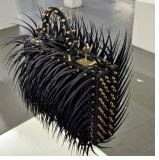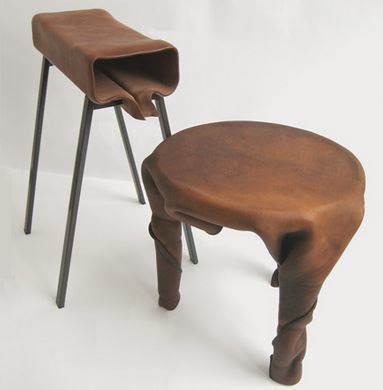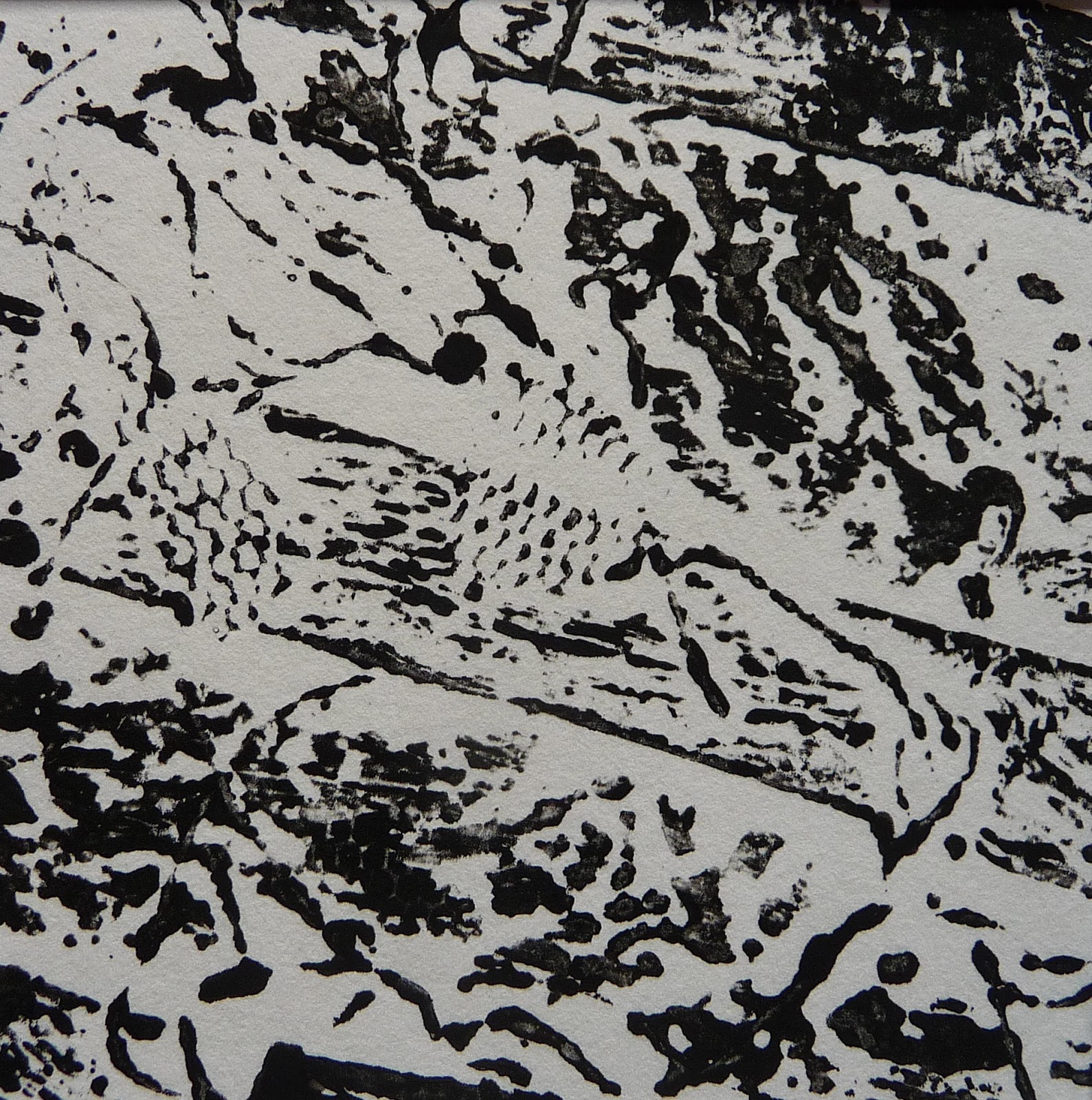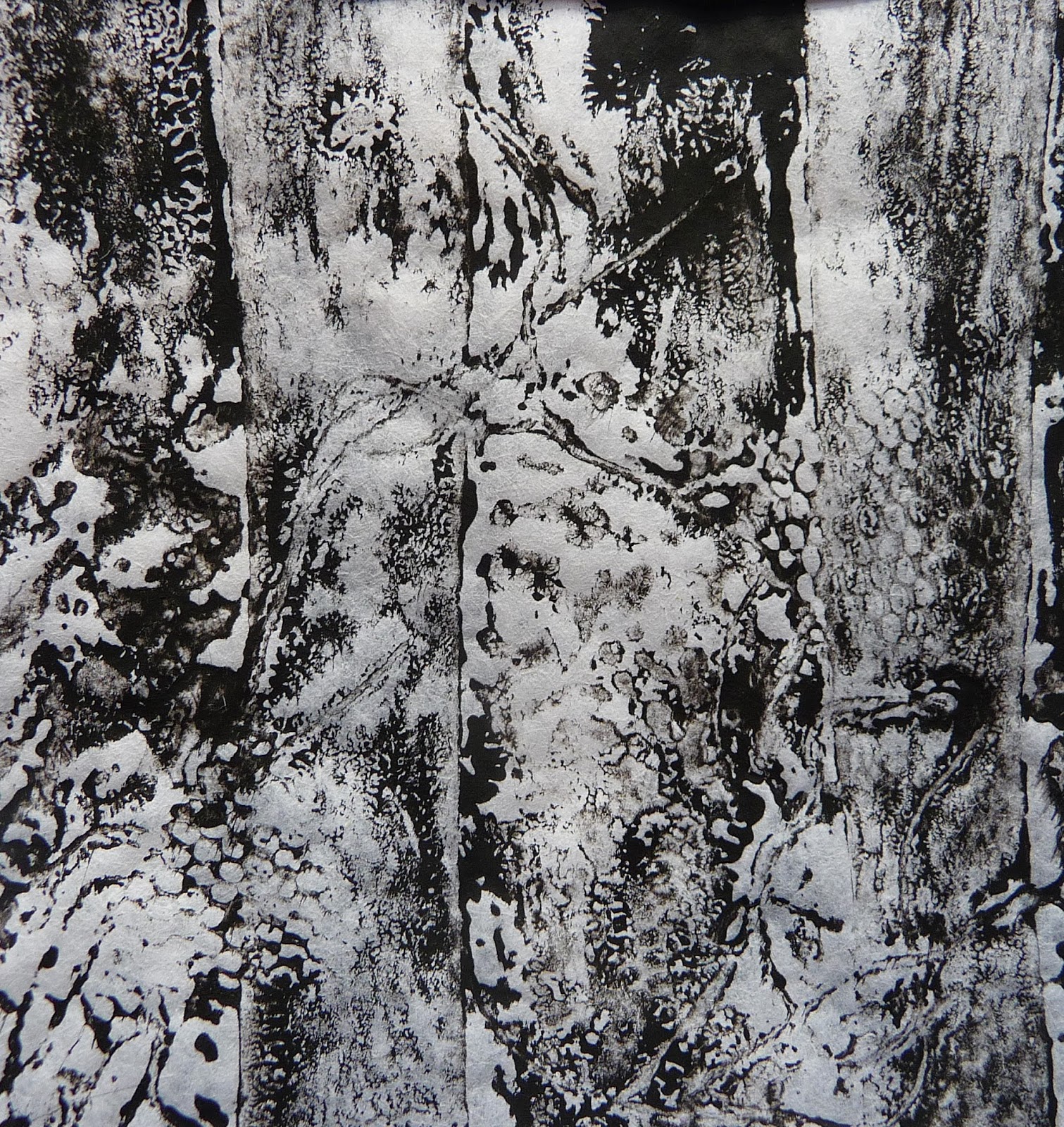After the frustrations of the last few days I've decided to put my window idea to one side. I've learnt that fighting an idea is very different to being challenged by one.
I'm going to take one of the simpler collograph images and make a black and white (and tones) image with paper. My starting point is this and I'm still looking for a bit of mystery:
 |
| My starting point |
I started by laying strips of torn newspaper vertically in my sketchbook (A3). I painted some bondaweb grey but felt it was too wet so I put a tissue on to soak up some of the excess moisture. It looked lovely and fitted what I wanted to show:
 |
| Tissue with excess paint |
 |
| Part of my finished work - the tissue worked well at creating mystery |
I thought this might back a good background on fabric so I printed it on bondaweb and put it on some white cotton. I feel pretty resistant to working on white but I needed to try it out. This is the result:
 |
| This shows the colour change even green on the unwanted dark shape |
It printed in a sort of sepia which certainly isn't what I wanted. I changed some of the colour settings but it was no better. I found the central black shape didn't fit the background function very well - it was far too prominent.
As I cast around for suitable materials to try I raided the thin outer layer of the silver birch in the garden. It cleaned up well with baby wipes and transferred to fabric using the ever present bondaweb:
It seems that if I want to use monochrome I'll have to apply paint directly onto my fabric in some way.
Something happened in my head overnight because I'm going to try some felting with some inclusions.
If I'm felting my first port of call is always The Art of Felt by Francoise Tellier Loumagne (2008). In this book there's some background information about the felting process but the main reason I look at it is for inspiration. The theme of her pieces is the changing sky and she explores the ways that it can be represented in felt. She gives illustrations of how an effect is achieved. This is called The Oncoming Storm:
 |
| The Oncoming Storm Francoise Loumagne |
Repeat with a paler shade of wool
Use a sewing machine to embroider swirling lines, adding detail to the design and making it more dense.
This one is called Bright spell and it is done using lightly gathered, printed net that is needle felted from both sides:
 |
| Bright spell - Francoise Tellier Loumagne |
The whole book is full to bursting with such gems so suitably inspired I gathered together some materials in the right colours and with lots of textures.
 |
| Yarns, fine steel mesh, lace, net, silk, throwsters waste to choose from. |
 |
I wanted to see if including wire would make a fabric I could manipulate so I knitted a small piece of wire mesh:
I wanted my felt to be quite soft and textural, there is no need for it to be robust. Between the second and third layers I put a variety of my materials simply to see how they performed.
 |
| Net curtain - probably the most successful |
 |
| Black yarn |
 |
| A black, crinkly yarn |
 |
| My knitted wire - it wasn't strong enough to hold a shape but gave a good texture |
 |
| Grey net, one, two and three layers thick - worked well |
It seems as though it's possible to get good colour variations with inclusions and without being too heavy handed with dark merino tops which I find are fairly unpredictable.
Here's the great irony: all these photos were taken with the felt held to the window! Laid flat on the table it all looked very, very bland. Perhaps the inclusions that need to be prominent would be best laid on the top of the wool.
 |
| Laid flat the felt looks very bland |
Maybe I'll get my window piece after all!
Tellier-Loumagne (2008) inspires experimentation so I tried dry felting into some commercial mesh:
 |
| My mesh |
 |
| Dry felting both front..... |
 |
| ...and back |
I like the way the wire shows a little but it still doesn't hold it's shape. I don't think this is very important right now but it's valuable knowledge.
I tried the same thing with net curtain as my base and it was possible to follow a shape very closely.
I've been working on how to interpret the tree trunks. I painted three pieces of bondaweb, a white, a grey and a black and I tore them into smaller fragments and placed them at random on organza.
 |
| Painted bondaweb on organza |
It looked promising so I tried it on four different backgrounds
 |
| Black silk |
 |
| Black net |
 |
| Fine steel mesh |
 |
| White silk |
The photos don't show these samples very well because they look quite delicate but the silk and the steel are quite lovely although for my purposes the white silk works best.
I've returned to the collograph image I used earlier in this post and I've changed the proportions to better reflect the long thin nature of the tree trunks. I used Word to do this and it will form the basis of my design. I'm going to play with one, two or three trunks and pick and choose the shapes around them.
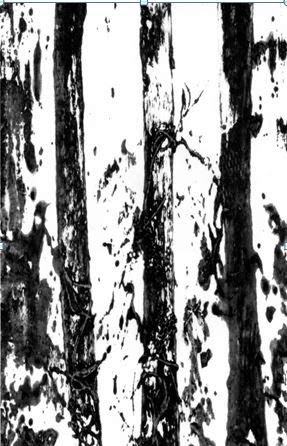 |
| The basis of my design |
Meantime I've dyed some of my white materials black.
I've been on a bit of a roll today (at last). I've made some lighter weight felt and included only white throwsters waste - in quantity - and it's turned out well. It has all the qualities I'm looking for. It's a bit mysterious, ethereal and quite calm. Against the window it looks lovely.
 |
| My silky felt |
I used my fabrics to create a collage that I plan to cut up and use as my tree trunks.
 |
| The start of my monochrome collage |
 |
| With painted bondaweb and organza |
Each tree trunk will be inevitably different. I'll cut into the fabric tomorrow.
Tellier-Loumagne, F. (2008) The Art of Felt. Thames and Hudson





